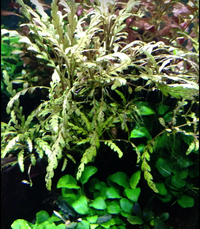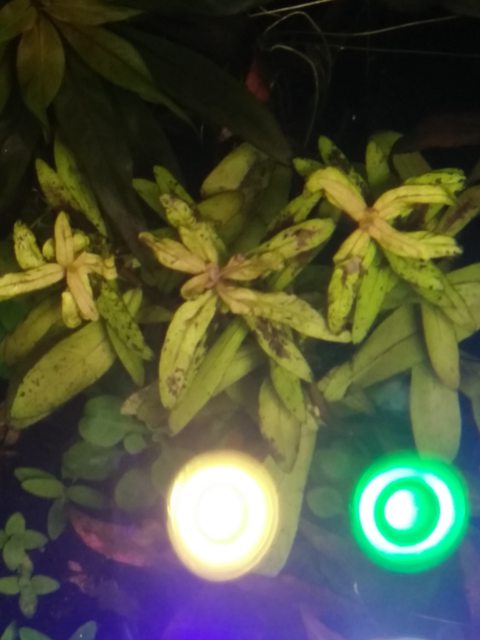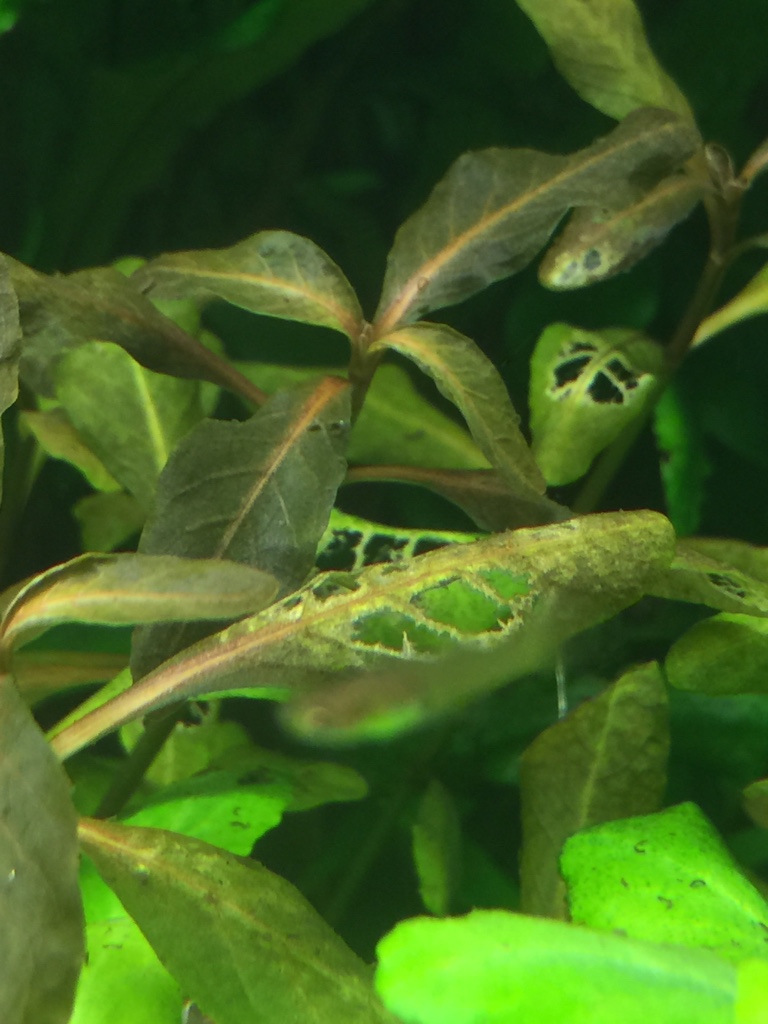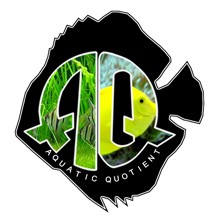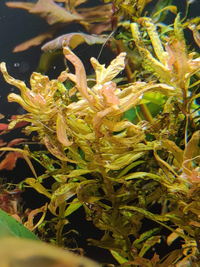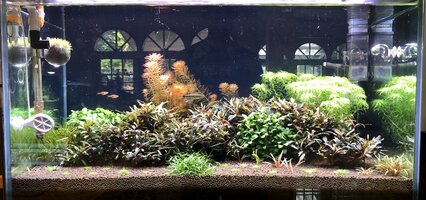I agree, and there is no magic recipe for success with all plants.
I made it a point not to say "EI doesn;t work.". I said EI doesn't work for all plants, perhaps a more suited statement is, "EI isn;t optimal for all plants."
anyway, Here are some pictures and links of common EI issues I've collected to show issues where EI fails, if you notice it's almost always lythracaea (or however you spell that lol)
from
@Zeus.
View attachment 185244
full EI dose of K excellent co2, still pinholes. I hope he can confirm if the issue was ever resolved or not.
Hey guys, Just trying to grow nesaea pedicellata and ammania gracilis as well. I'm having a bit of hit and miss with them. Tank specs are 130g - 48 x 24 x 28 deep 3x 54w hot5's w reflectors at 32" from substrate 2x gieseman midday 1 gieseman aquaflora. Up aquasoil pressurised co2 -...

barrreport.com
EI and ammannia pedicellata almost never works
I aquired some Nesaea gold last week and its growing but the new growth on most but not all the stems are growing in gnarled/curled. Id say 6 out of 10 stems are this way.. was wondering if anyone here has experience with this plant .. I'm not sure if this is a deficiency or if it just...

barrreport.com
no pictures but still another case of stunting.
so over the course of about 2 weeks my nesaea went from a healthy yellow to weird brown patches. i dont think it grew in height during that time frame either i just straight up dunno whats going on with this plant lol ludwigia peruensis, bottom leaves keep falling off and have pin holes...

www.plantedtank.net
View attachment 185245
full EI excellent co2, still stunting and melting
Any ideas on these deficiencies? Hygrophilia thai is developing holes in the leaves. The Nesaea Golden is having some really spiraled and twisted new growth. Same with the Alternanthera Reineckii. Really wrinkly slow producing new growth. Thoughts? I know the second two are some of the...

www.aquaticplantcentral.com
EI dosing and ammannia from
@erwin123
it stunted promtply and didn't look very good under moderate dose of APT. some stems looking decent and some completely twisted and stunted, this is seen quite commonly under richer dosing.
View attachment 185247
now with lower dose of the all in one and some nh4/urea from root tabs (which I believe helps a lot) the plant looks better.
View attachment 185248
I'm trying to figure out what is wrong with my wallichi. I have a 175w 10k mh 32" from substrate, injecting co2, dosing npk, csm+b via ei. It was pearling and putting off new stems until I switched lighting(was using 23w 6500k CFLs) so I'm wondering if its from to much light. My AR is looking...

www.plantedtank.net
EI and wallichii. problem
Hi all, Been following threads in this forum Love the advice. Please help, I've trouble growing wallichii and downois I've posted some pictures and you can see the problem of stunted growth with wallichii or no growth with downoi's. Thanks

www.ukaps.org
everything growing well, wallichii not under EI.
Hi Guys, I bought some R. Wallichii and planted them in my tank. They have been in there for like 3 months now, and I have some questions. 1. When I bought them, they were showing a very nice pink. Almost luminous. Now mine is more like rusty red. 2. Some of my stems are showing thick...
www.aquaticquotient.com
rotala wallichii issue.
Golden nesaea - stunting I've had some golden nesaea in my tank for probably a year. For most of that time, it has languished with withered leaves, not really dying but not really living either. By giving it some more light and staying on top of fertilizing/maintenance, I've gotten it to grow at...

www.plantedtank.net
ammannia pedicellata issues under EI.
View attachment 185249
Is this a sign of micro toxicity? I have more than 20 types of plants and i only struggle to grow this plant! EI dosing for macro Tetra plantamin for micro Additional seachem iron 3 times a week at recommended dose picture of the tank

www.plantedtank.net
EI issue with pedicellata.
View attachment 185250
rotala wallichii under EI struggling
Will try to keep this thread updated with the process of trying to recover these rotala from what they were when I got them. It just went downhill. This is how it came from the shop (Oct 20th): , on Flickr This is how it looks now (Nov 29th): , on Flickr I dose EI, have pressurized CO2 at...

www.plantedtank.net
I am hoping this is enough links and pictures, to show that EI does not work for all plants.
on the other hand, there are examples of people growing wallichii, ammannia under high light low co2 (or even no co2) with no stunting. these tanks usually utilise urea/nh4. whether that be from substrate, fertiliser, or root tabs. when you see people who are beginners growing ammannia, wallichii well. they are usually using softwater, rich substrate and tropica fertiliser, or seachem.





